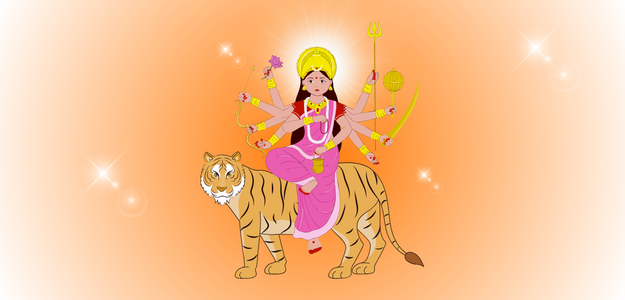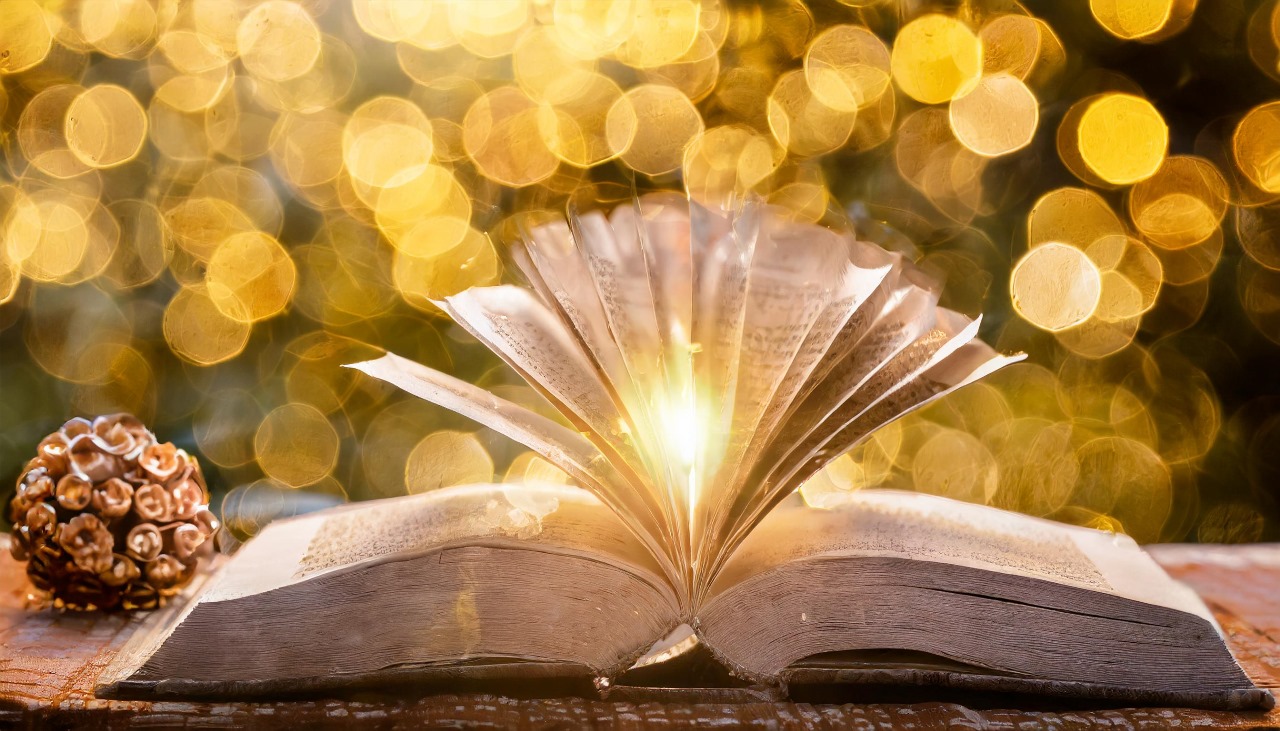Blogs

Navratri Day 3: Maa Chandraghanta, Date, Tithi, and Color
Welcome to the vibrant and joyous festival of Navratri! As we delve deeper into these nine auspicious days, each day brings us closer to the divine energy that permeates our lives. On Day 3 of Navratri, we pay homage to Maa Chandraghanta - the embodiment of grace and courage. This mighty goddess is worshipped for her ability to destroy all evil forces and bring peace and prosperity into our lives.
The significance of Maa Chandraghanta in Hindu mythology
Maa Chandraghanta holds immense significance in Hindu mythology and is worshipped on the third day of Navratri. She is depicted as a fierce goddess, riding a lion and adorned with a half-moon shaped like a bell on her forehead. This form of Devi Durga represents bravery, courage, and protection.
According to ancient legends, Maa Chandraghanta emerged when Parvati married Lord Shiva and adorned her forehead with the crescent moon-shaped bell. The sound produced by this bell is said to eradicate negative energy and bring positivity into one's life.
As devotees worship Maa Chandraghanta on the third day of Navratri, they seek her blessings for strength and fearlessness. It is believed that she eradicates all obstacles from our lives and brings inner peace.
The presence of Maa Chandraghanta during Navratri reminds us to embrace our fears head-on, just as she fearlessly rides the ferocious lion. By worshipping her on this auspicious day, we are reminded that true power lies within us when we face challenges with determination.
In Hindu mythology, Maa Chandraghanta symbolizes the victory over evil forces and teaches us to stand up against injustice bravely. Her divine grace empowers individuals to overcome their weaknesses and strive for righteousness.
So let us invoke the blessings of Maa Chandraghanta on this Day 3 of Navratri and embrace her qualities of strength, courage, and protection in our lives!
Date and tithi for Navratri Day 3
Navratri is a nine-night festival celebrated with great fervor and devotion across India. Each day of Navratri holds immense significance, as it honors different forms of the goddess Durga. On Day 3 of Navratri, devotees worship Maa Chandraghanta, the third form of Goddess Durga.
This year, Day 3 of Navratri falls on [date]. The tithi or lunar phase for this day is [tithi]. It is believed that worshipping Maa Chandraghanta on this auspicious day brings peace, prosperity, and courage to her devotees.
The color associated with Day 3 of Navratri is yellow. Yellow symbolizes brightness and positivity. Wearing yellow attire or incorporating yellow elements in your decorations can help invoke the divine energy of Maa Chandraghanta.
To worship Maa Chandraghanta on this day, you can set up a small altar adorned with flowers and offer prayers to the goddess. Chanting mantras dedicated to her can also enhance your connection with her divine presence.
On Day 3 of Navratri, many people observe various traditions and rituals to honor Maa Chandraghanta. Some fast throughout the day while others consume only certain types of food as part of their religious practice. Devotees often participate in cultural events such as dances like Garba and Dandiya Raas as a way to celebrate the festival.
As we celebrate Maa Chandraghanta during Navratri's third day festivities, let us embrace positivity and seek inner strength from her blessings. May she guide us towards courageously facing life's challenges and spreading love wherever we go!
The meaning behind the color associated with Day 3
The color associated with Day 3 of Navratri is grey. Grey may not be the most vibrant or eye-catching color, but it holds a deep symbolic meaning in Hindu mythology. It represents stability and balance, qualities that are embodied by Maa Chandraghanta herself.
Grey is often associated with neutrality and impartiality. In the context of Navratri, it reminds us to remain balanced and unbiased in our thoughts and actions. Just as Maa Chandraghanta maintains harmony between good and evil forces, we too should strive for equilibrium in our lives.
Furthermore, grey symbolizes resilience and strength. It signifies the ability to endure challenges with grace and determination. By embracing this color on Day 3 of Navratri, we are reminded to stay strong in the face of adversity like Maa Chandraghanta does.
Grey also serves as a reminder of humility. It is a modest color that doesn't seek attention or admiration. Similarly, Maa Chandraghanta teaches us the value of humility by showing us that true strength lies in being grounded and selfless.
So as we adorn ourselves in grey on Day 3 of Navratri, let us embody these qualities represented by this understated yet meaningful hue: balance, resilience, strength, and humility.
How to worship Maa Chandraghanta on this day?
Worshipping Maa Chandraghanta on the third day of Navratri is believed to bring immense blessings and protection. To perform the puja, start by cleaning the house and setting up a sacred altar adorned with flowers and incense. Place a picture or idol of Maa Chandraghanta on the altar.
Begin by offering prayers to Lord Ganesha, seeking his blessings for a successful puja. Light a diya (lamp) using pure ghee or oil as an offering to the goddess. Offer her fresh flowers, fruits, sweets, and milk along with incense sticks.
Recite mantras dedicated to Maa Chandraghanta like "Om Devi Chandraghantayai Namah" and "Ya Devi Sarvabhuteshu Ma Chandraghanteti Vishruta". These chants invoke her divine presence and seek her blessings.
Performing Aarti is an essential part of worship. Wave camphor or ghee-filled lamp in front of Goddess Chandraghanta while chanting Aarti hymns. Seek her grace and protection against evil forces.
Conclude the puja by distributing prasad among family members as it symbolizes receiving blessings from Mother Goddess herself.
Remember that devotion, sincerity, and purity are key elements when worshipping Maa Chandraghanta on this auspicious day.
Popular traditions and rituals observed on Day 3 of Navratri
Popular traditions and rituals observed on Day 3 of Navratri are filled with fervor and devotion. Devotees gather in temples, homes, and community spaces to honor Maa Chandraghanta, the third manifestation of Goddess Durga.
One of the common rituals is the recitation of special prayers dedicated to Maa Chandraghanta. These hymns praise her courage, grace, and protective nature. Devotees also offer flowers, incense sticks, and fruits while chanting mantras during puja ceremonies.
In some regions, a unique tradition called "Kanya Pujan" takes place on this day. Young girls representing the divine energy of goddesses are invited into homes to be worshipped as forms of Goddess Durga herself. They are offered food, gifts, and blessings for their purity and innocence.
Another popular custom is observing fasts or vratas on this day. Devotees abstain from consuming grains or non-vegetarian food throughout the day as a way to purify their minds and bodies.
Besides these rituals specific to Maa Chandraghanta worship,
Navratri celebrations also include vibrant cultural performances like Garba dance events where people come together in colorful attire to dance rhythmically around an idol or image of Goddess Durga.
Day 3 of Navratri brings communities together in celebration through various customs that symbolize devotion,
gratitude,
and seeking blessings from Maa Chandraghanta
Conclusion: Celebrating Maa Chandraghanta and embracing positivity during
Conclusion: Celebrating Maa Chandraghanta and embracing positivity during Navratri Day 3
As we continue our journey through the auspicious festival of Navratri, Day 3 brings us closer to the divine energy of Maa Chandraghanta. This fierce form of Goddess Durga is a symbol of courage and protection. On this day, devotees worship her with utmost devotion and seek her blessings for strength, prosperity, and inner peace.
The significance of Maa Chandraghanta in Hindu mythology reminds us that even in the face of challenges and darkness, there is always a ray of hope shining through. Her half-moon-shaped bell on her forehead resonates with positivity and purity, dispelling negativity from our lives.
On this day, which falls on the third tithi (lunar day) during Navratri, devotees adorn themselves in vibrant yellow attire. The color yellow represents brightness, optimism, and happiness – qualities that align perfectly with Maa Chandraghanta's divine essence.
To invoke her blessings on this special day, one can offer prayers to Maa Chandraghanta by performing various rituals. Start by setting up an altar or sacred space adorned with flowers and incense sticks. Offer fresh fruits or sweets as prasadam (divine offering) while chanting sacred mantras dedicated to Goddess Durga.
Devotees also recite hymns such as "Om Devi Chandraghantayai Namah" or "Ya Devi Sarva Bhuteshu" to invoke the presence of Maa Chandraghanta into their lives. It is believed that sincere devotion towards her can help eliminate obstacles from one's path and bring about spiritual growth.
During Navratri Day 3 celebrations across India, you will witness various traditions being observed by devotees. Some may participate in cultural events such as Garba dance or Dandiya Raas, where they dance in circles to the rhythmic beats of music.




 By -
Ashutosh and Tushar
By -
Ashutosh and Tushar 0
comments
0
comments Tag
Tag (1).jpeg)
 2024-09-29 16:35:16
2024-09-29 16:35:16 (1).jpg)













